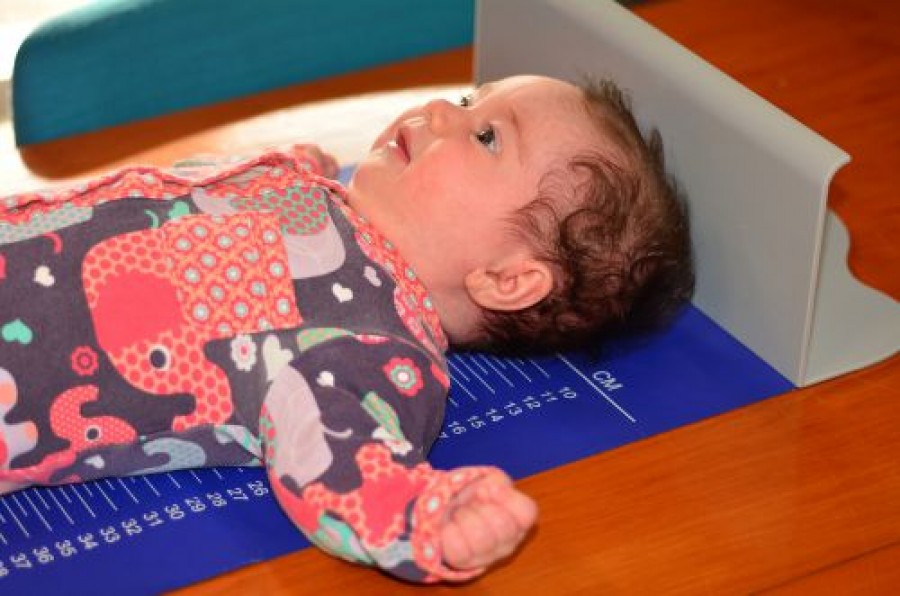How to do Baby Led Weaning

What is baby led weaning?
Baby led weaning is a term for a way of introducing solid foods to your baby’s diet. Through baby led weaning (BLW) instead of moving from breast milk or formula, to puree food, and then to solids, you begin to introduce some solid foods at the point when you would normally move your baby onto puree foods. It also means allowing your baby to feed themself – so instead of you spoon feeding them, you provide your baby with the foods and let them choose what they would like to eat – using their hands!
This method has proven popular with many families, and a lot of parents find themselves moving onto BLW without even realising it. This can particularly be the case when there is more than one child at the dinner table. Babies learn best through observation and imitation, so you will likely notice your baby observing you and their siblings and reaching for food to feed themselves, as they watch you do the same thing.
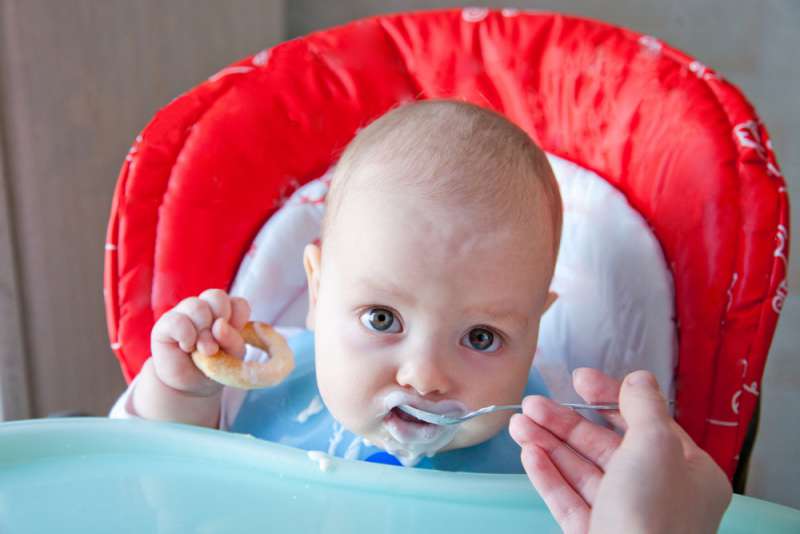
What are the benefits of baby led weaning?
Although very little formal research has been conducted, many parents claim that there are many benefits to BLW method of introducing solid foods over using purees. These include:
Babies learn & explore for themselves
BLW allows baby’s freedom to learn about their food and try different textures, tastes and colours of foods without you telling them what to eat. Many parents agree that this has led to less fussy eaters and baby’s enjoy the decision making process!
Babies join family mealtimes
With this method, you can make up a plate of suitable foods and sit your baby down to eat with you as a family. Many researchers agree that when babies are included in this way, they tend to engage more with their food and enjoy the social aspect of being included in the family. As mentioned, babies learn best through imitation so sitting down at dinner with you, gives them the chance to learn from you.
Less likely to reject foods later on
Being able to engage with different textures and lumpy foods, naturalizes the different type of foods your baby will eat, as a toddler and young child. BLW has shown that babies are less fussy and open to eating a better variety of foods.
Saves you time
Making up purees for your baby can be time consuming and takes a lot of preparation. By feeding your baby appropriate foods that you’re eating as part of a family meal any way, saves you time.
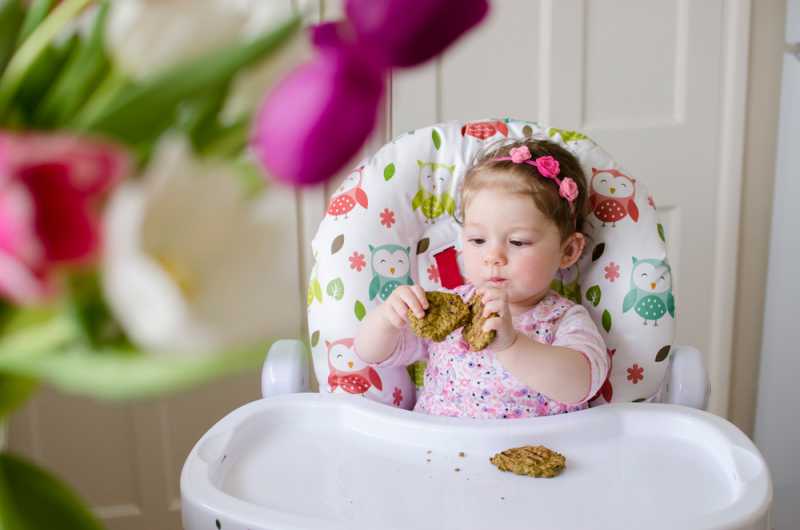
When is my baby ready for baby led weaning?
Your baby’s digestive system should be mature enough to cope with digesting some solid foods from about 6 months onwards – many medical practitioners do not advise giving your baby solid foods before this time. It’s important to know that much like other stages of development, this can vary from baby to baby too and some babies might not be quite ready to move onto solids until later, around 8 -10 months old – and that’s fine too.
There are a number of other signs you can look at for with your baby that can indicate to you that they might be ready to start sampling some solids:
- Your baby is able to sit upright without support in their high chair
- Your baby no longer uses the ‘tongue-thrust’ reflex – where they push solids out of their mouth with their tongue
- Your baby has coordinated hand control and is able to pick items up with their fingers, not just with their fists
- Your baby is taking an increased interest in other foods, and trying to imitate you when you eating – you might even notice they try and take food from your plate to try!
The main concern parents have with BLW is the risk of choking and this is understandable. That’s why it’s important to make sure your baby is signalling to you that they are ready to move onto this next stage of eating through some of the signs listed above.
As through BLW babies are able to control the amount of food they put in their mouths, and the amount they eat and swallow when they’re ready, it means that there is actually very little risk of your baby choking. Making sure they are able to sit upright unattended is key with the first steps of BLW for this reason.
Remember if you are unsure or worried at all to speak with your doctor or midwife, and never leave your baby unattended when weaning them onto solid foods.
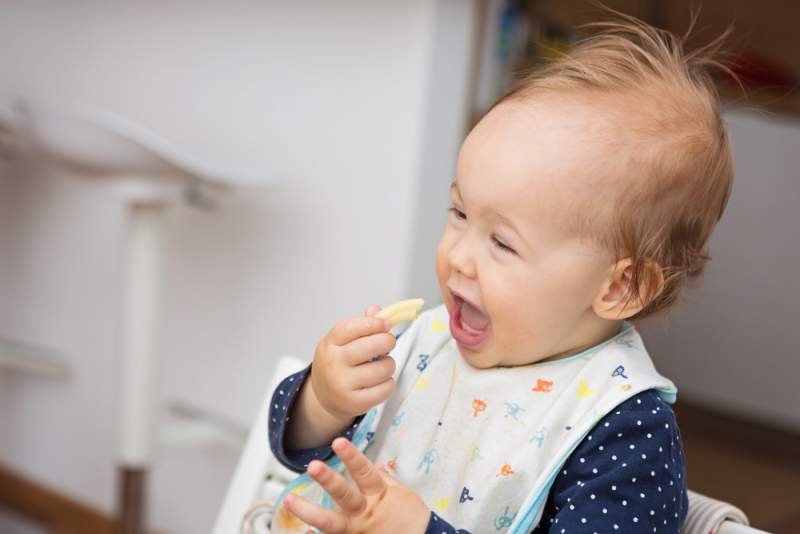
What foods are best for baby led weaning?
Your baby’s first foods should be a healthy mix of fresh fruit, cooked vegetables and simple carbohydrates. When thinking what foods would be best for your baby, consider their soft gums and make sure they are easy to chew and swallow.
Many parents recommend cutting the food down into ‘finger foods’ – long chunks of food that make it easy for your baby to pick up and take bites off, rather than cutting it down to small chunks that can increase the risk of choking.
By providing your baby with a mixture of different foods and tastes, you’ll notice your baby starting to experiment at first and then selecting the foods they find they need nutritionally.
Some suggestions to get you started:
- Banana, melon and watermelon cut into strips
- Ripe plums or peaches cut into bigger chunks
- Softly cooked apple and pear
- Avocado cut into long chunky strips
- Softly cooked carrots, parsnips, green beans, broccoli and zucchinis
- Sweet potato and pumpkin softly cooked and cut into chunks
- Cooked pasta spirals or different rices
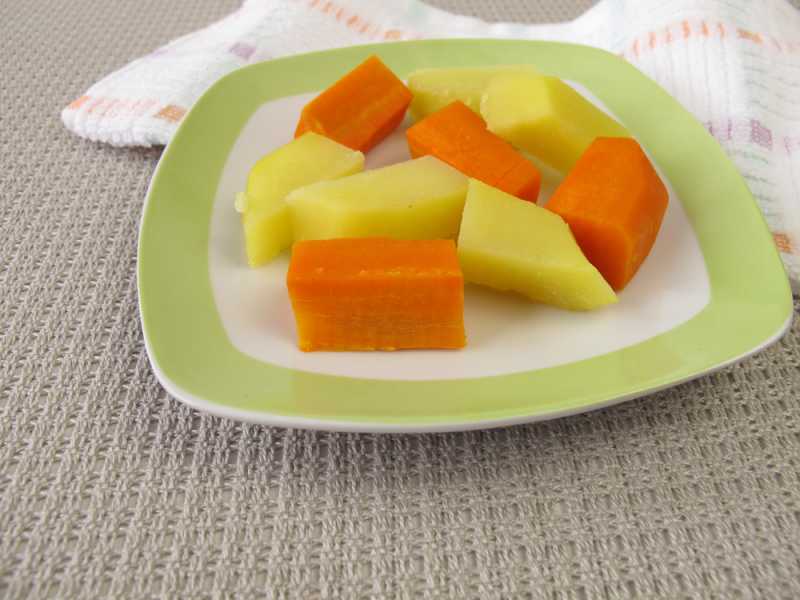
What foods should I avoid?
The foods recommended above are great because they can be cut into sizeable chunks that your baby can then bite off and chew on, deciding how much is the right amount for them. The foods to avoid would generally be the ones that are opposite of this.
Other things to keep in mind and foods to avoid with BLW:
- Small foods that are a high choking risk such as grapes, cherries, baby tomatoes, nuts, popcorn etc
- Foods that are more likely to cause an allergic reaction such as gluten, complex carbohydrates (like white breads and pasta), egg whites, peanuts, seafood and some citrus fruits
- Any foods with added salt or sugar
- Any foods where there is a history of allergy in the family
- Processed fatty foods such as chips, microwaveable meals, some breakfast cereals and sweets
- Stimulating foods and foods with a high sugar content
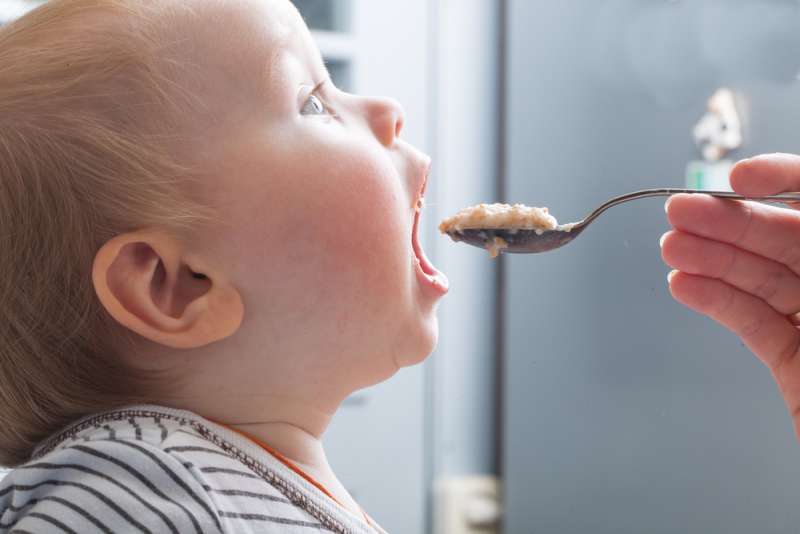
How do I make sure my baby gets the most out of baby led weaning?
BLW should be introduced in conjunction with moving your baby away from breast milk and formula – it’s a staged process and won’t happen overnight. It can also be a fun process watching your baby interact with new foods and seeing their facial expressions as they do!
You will probably notice as you introduce BLW more, your baby will decline milk more as a meal but still want it for nap times and sleeping times, which is usually a big part of a bedtime routine.
Some other advice to help you get the most out of BLW:
- Don’t force it! – Let your baby move into this stage at a pace that is natural for them and don’t stress if they still want to breast or bottle feed – this is a process and you and your baby will both be happiest if you do it at a pace that works for you and them.
- Let it be messy! – As you can probably imagine, letting your baby be in charge of their eating can lead to a lot of mess – especially in the beginning! You’ll probably find more food ends up on the floor or on your baby than in your baby – and this is normal! They are learning as they go. Just accept the mess as a part of it!
- Chunky Bites – Serve larger pieces that are easier for your baby to grasp and take bites of, over small pieces they can fit in their mouth at once, or that require a lot of fiddly grasping. If wanting to serve your baby rice, opt for sticky rice that they can take a handful of.
- Make it fun! – Try cutting the food into different shapes or textures, and remember baby’s love bright primary colours by this stage so bright foods are sure to get their attention and interest!
- Eat with them – As mentioned earlier, baby’s learn best through imitation and it’s a great bonding experience for all the family. Sitting and eating together will help your baby pick up more quickly what it is they’re supposed to be doing exactly!
- Keep it soft – You want the food to just be mashable, but not so soft it’s falling apart when your baby tries to pick it up.
- Start small and build – Just start out with a few food items to begin with so your baby doesn’t become overwhelmed, and add more as your baby learns and gets the hang of feeding themself as you go along.
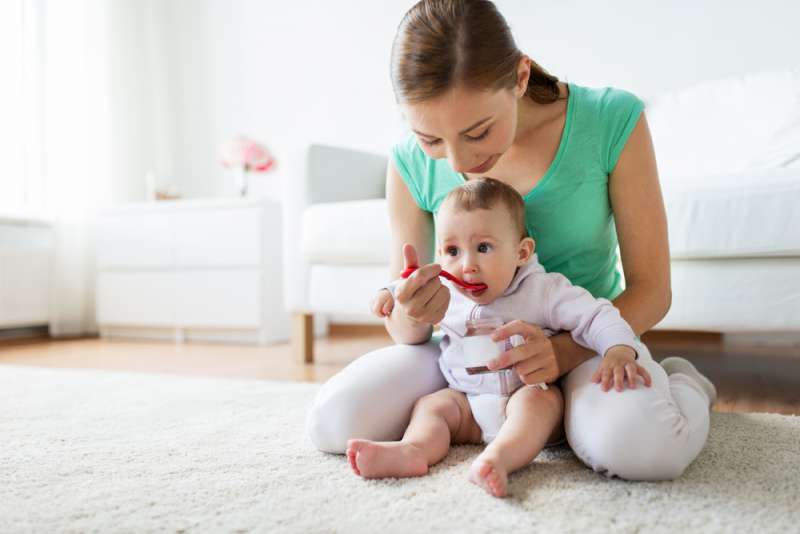
This is yet another new and fun stage for you and your baby and you’ll probably be surprised by how quickly they pick it up and develop their own preferred palate for food!
Don’t be too restrictive with moving your baby onto solids, and it’s fine to take a mixed approach in how you food them, using puree, milk and solids. The most important thing is that your baby is eating, engaged and happy!


